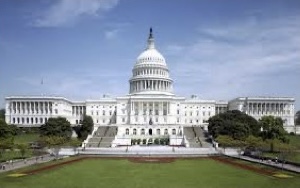Poll: Republicans in Congress’ Proposed Budget Plan
This Navigator Research report covers the latest perceptions of Republicans in Congress’ proposed budget plan, specifically proposed cuts to Medicaid in order to pay for tax cuts for the wealthy.
By 9-points, Americans oppose Congressional Republicans’ proposed budget plan (36 percent support – 45 percent oppose), though one in five say they are unsure (19 percent).
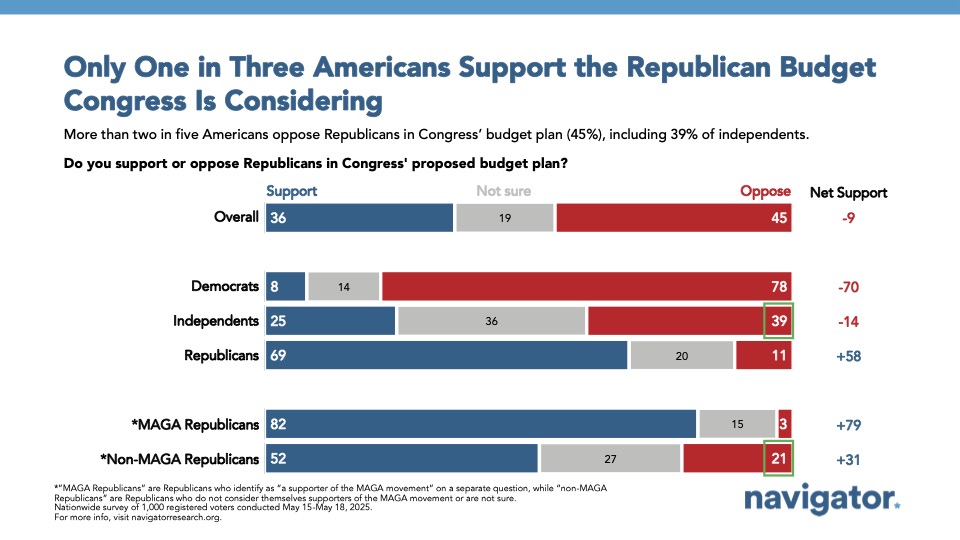
- When asked whether they support or oppose additional tax cuts, Americans narrowly support the cuts by 3 points (42 percent support – 39 percent oppose).
- However, after learning that these tax cuts will mostly benefit those who are already rich, Americans oppose the plan by 27 points (30 percent support – 57 percent oppose). After learning this information, 59 percent of independents and a quarter of Republicans oppose the plan.
- Americans making less than $100,000 per year are most likely to oppose tax cuts for those who are already rich (59 percent), while those making over $100,000 per year are divided (46 percent support – 47 percent oppose).
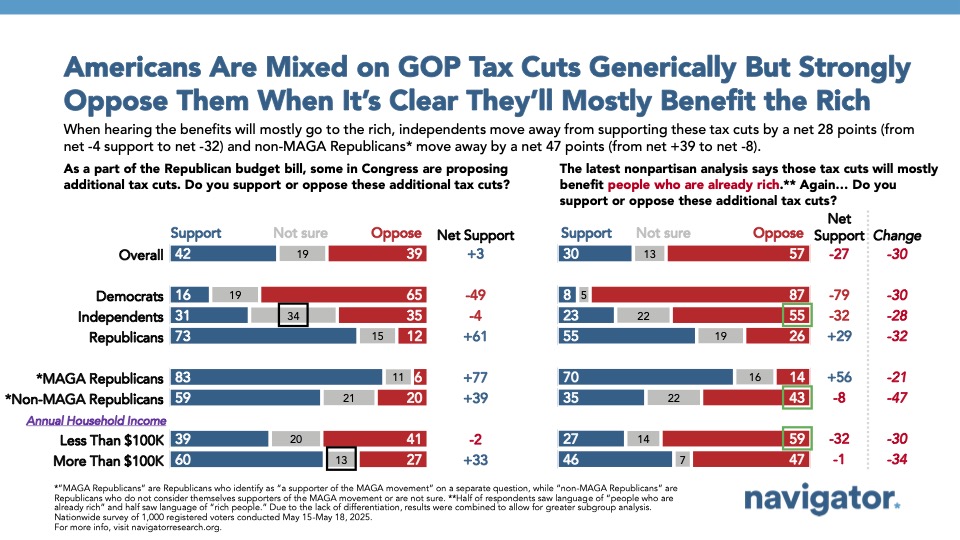
By a 27-point margin, Americans are more concerned that the plan benefits the wealthy few (57 percent) than that taxes will remain too high for American businesses and families (30 percent).
A majority of independents (54 percent) and 31 percent of Republicans are concerned about the wealthy gaining the benefits while costs go up for the middle and working class.
Medicaid
Medicaid remains overwhelmingly popular. The best reason to protect Medicaid is: providing health care coverage to people who can’t afford it, seniors, and kids.
- Three-quarters of Americans view Medicaid favorably, including 71 percent of independents and 64 percent of Republicans. When asked who benefits most from Medicaid, most cite those who are low-income or disabled.
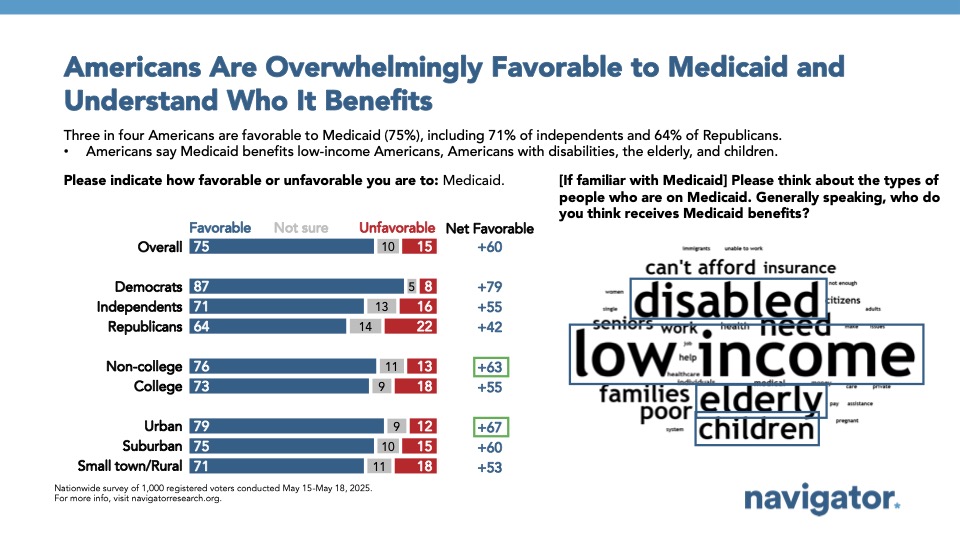
- Just 27 percent of Americans have heard “a lot” about Congress proposing cuts to Medicaid, largely driven by Democrats (39 percent). Only 21 percent of independents and 16 percent of Republicans say they have heard a lot about the proposed cuts. By comparison, 63 percent of Americans say they have heard “a lot” about Trump’s use of tariffs, and 43 percent say they have heard “a lot” about the selection of the new Pope, Pope Leo XIV.
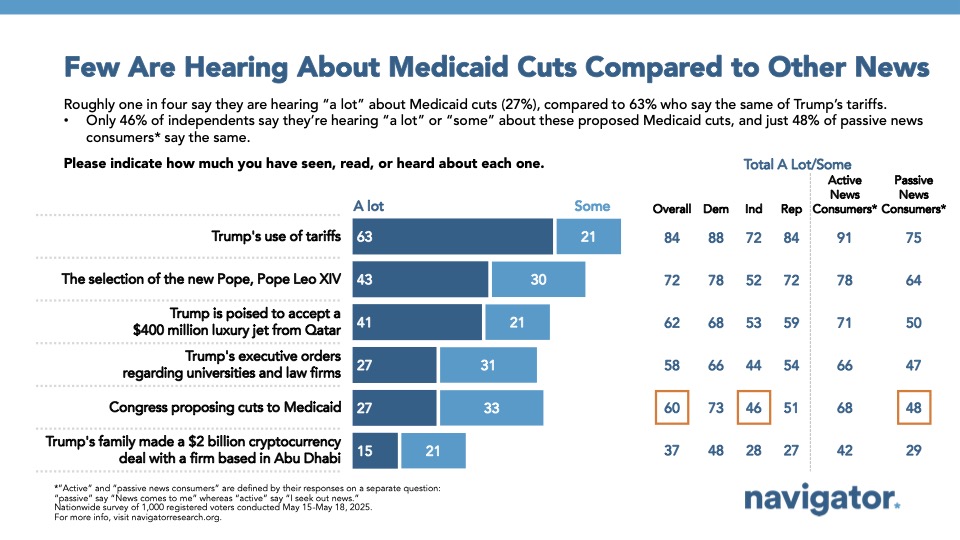
The top reasons to protect Medicaid are:
- Medicaid provides health care coverage to people who can’t afford it” (48 percent top three),
- Millions of Americans could lose their health care coverage from Medicaid cuts (40 percent top three); and,
- Medicaid covers nearly half of all kids and 60% of residents in nursing homes (37 percent top three).
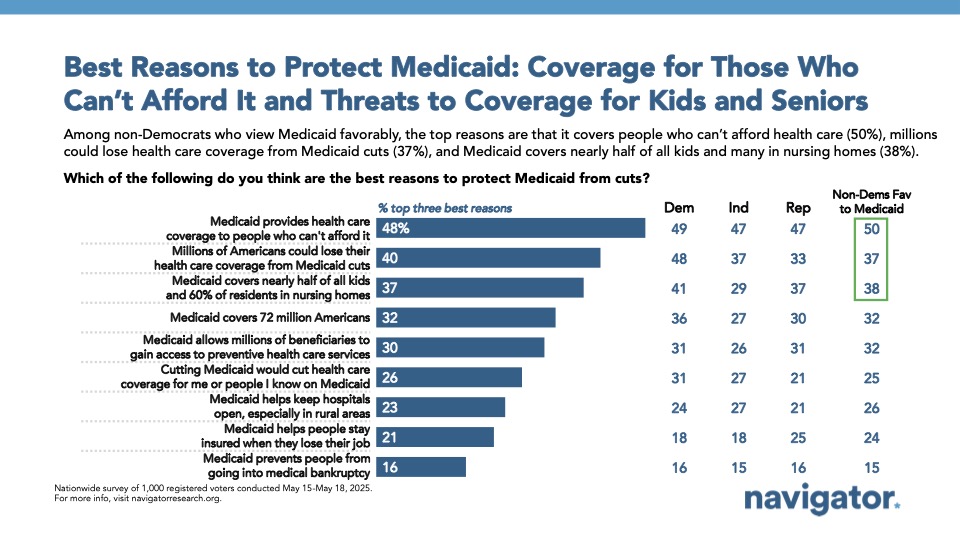
Messages that Move
The strongest case against the GOP budget acknowledges that the current tax system is already unfair and rigged. We tested two statements about the Republican tax plan against the same Republican statement. The first notes that the Republican tax plan favors the wealthy without acknowledging that the system is broken. The second starts by acknowledging that the system is broken.
- Standard Message: This new Republican budget plan gives tax breaks to the wealthy while raising costs and cutting services for everyone else.
- Broken system: Our tax system is already unfair and rigged to benefit wealthy people instead of people who work for a living. This new Republican budget plan gives tax breaks to the wealthy while raising costs and cutting services for everyone else.
Acknowledging that the system is already stacked against working people strengthens the argument from a margin of net +8 to net +30. And it is particularly effective among Americans making less than $100,000 per year (net +6 agree compared to net +30).

We also tested whether it is more effective to talk about people as numbers (the “top x percent/bottom x percent”) when describing who benefits and who loses under the GOP plan.
- People as Percents message: Under the new Republican tax plan, 70% of the benefits will go to the richest 5%, while costs will go up for the bottom 40% of Americans.”
- Descriptive message: Under the new Republican tax plan, the vast majority of the benefits will go to the wealthy few, while costs will go up for the middle class and working people.
In this test, the “People as Percents” message outperformed the Republican message by 20 points and the descriptive message by 27 points. Critically, the descriptive message is more effective among independents (net +29 compared to net +21) and Americans making less than $100,000 per year (net +29 compared to net +22).
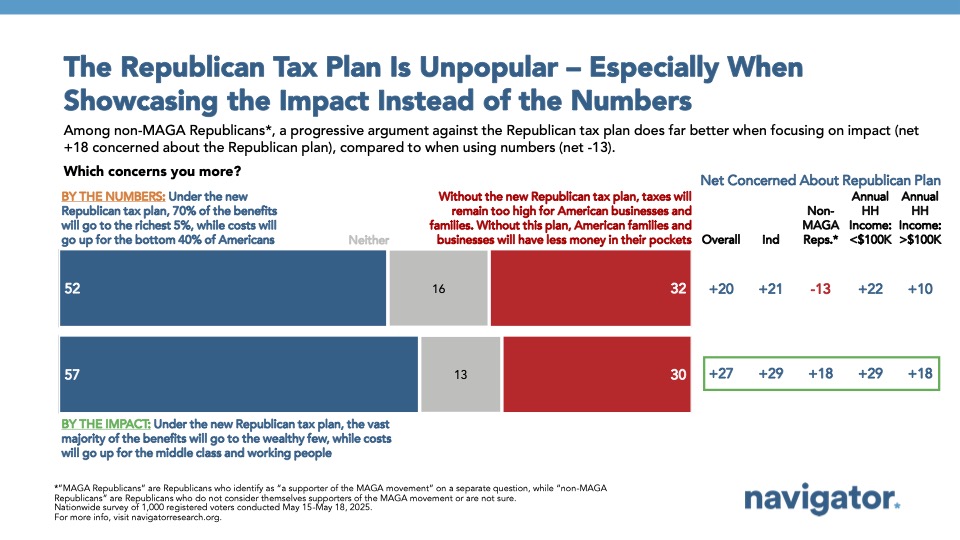
About The Study
Global Strategy Group conducted a public opinion survey among a sample of 1,000 registered voters from May 15-May 18, 2025. 100 additional interviews were conducted among Hispanic voters. 76 additional interviews were conducted among Asian American and Pacific Islander voters. 100 additional interviews were conducted among African American voters. 100 additional interviews were conducted among independent voters. The survey was conducted online, recruiting respondents from an opt-in online panel vendor. Respondents were verified against a voter file and special care was taken to ensure the demographic composition of our sample matched that of the national registered voter population across a variety of demographic variables. The margin of error for the full sample at the 95 percent level of confidence is +/- 3.1 percentage points. The margin of error for subgroups varies and is higher.

